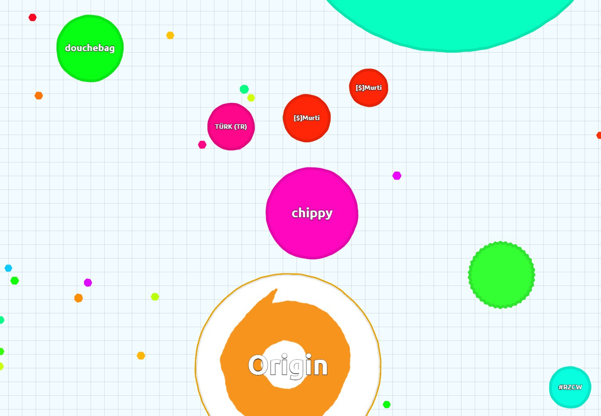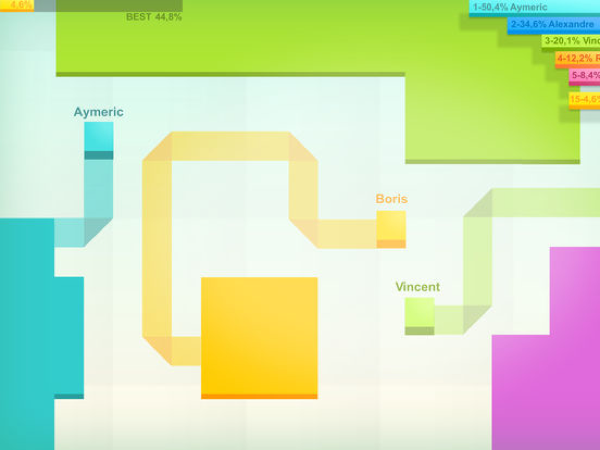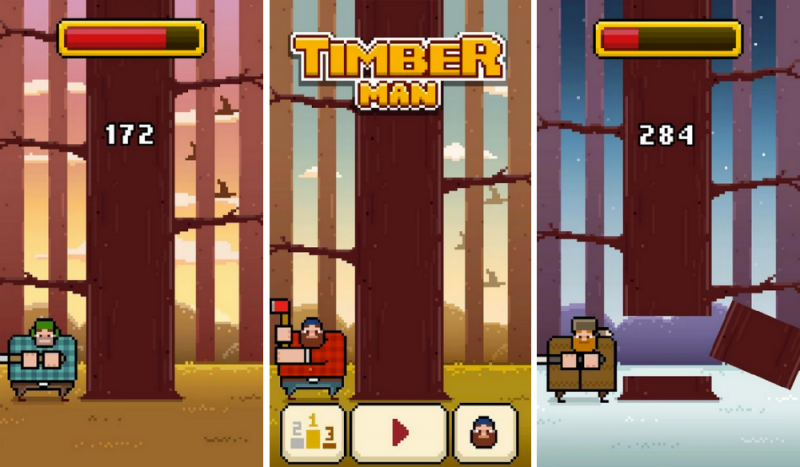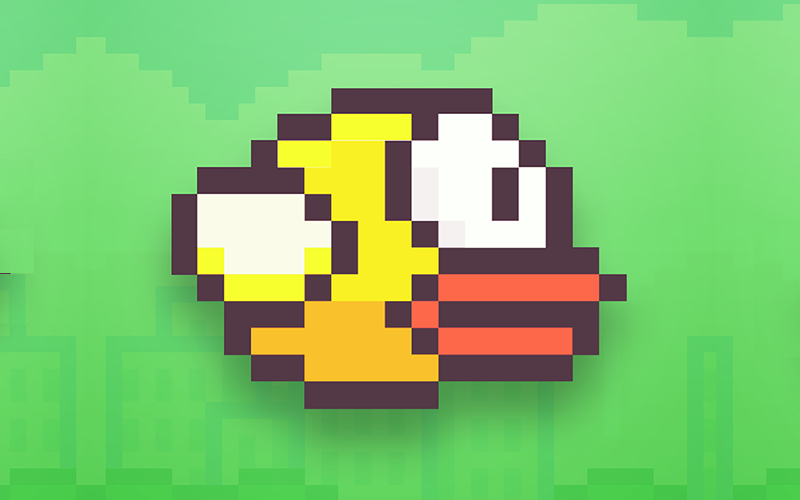100 millones de descargas: cómo los juegos móviles hipercasuales están reescribiendo las reglas del diseño de juegos
¿Cómo se crea un juego que casi todos querrán jugar?

A primera vista, acumular una gran cantidad de descargas en el mercado móvil moderno parecería una tarea asombrosa. Sin embargo, cuando miras juegos exitosos como 1010! , Ballz , Agar.io , Dune o Piano Tiles , los diseños detrás de ellos son tan simples que muchos desarrolladores tienen derecho a preguntarse: "¿Por qué no pensé en eso?".
El término "hipercasual" se ha convertido en una forma colectiva de hacer referencia a juegos de esta naturaleza. Estos títulos suelen tener una única mecánica y un único objetivo, pero alcanzar una puntuación alta puede resultar tremendamente difícil. Hay una serie de editoriales (Ketchapp, Voodoo y Gram, por nombrar algunas) que, en los últimos años, han logrado reunir una audiencia diaria que podría rivalizar con la mayoría de las grandes cadenas de televisión. Es ingenuo creer que cada uno de estos editores tiene una "salsa secreta", pero ¿cómo han logrado que un juego alcance los 100 millones de descargas?
¿Cómo eligen estos estudios los mejores prototipos? ¿Qué se necesita para diseñar la experiencia hipercasual perfecta? Y, lo más importante, ¿cómo llegan a los 100 millones de descargas?
Perfeccionando la mecánica
En esencia, todos estos juegos hipercasuales se basan en una única mecánica. De hecho, sería justo sugerir que el conquistador Flappy Bird podría considerarse el comienzo del género hipercasual en dispositivos móviles.
La puntuación de un jugador se utiliza como métrica principal para el progreso del usuario en el perfeccionamiento de esa mecánica. Esto es muy diferente de, digamos, un BBB (Base-Battle-Build), en el que los usuarios eligen estratégicamente cómo desplegar el ejército perfecto, o un juego de Match-3 que se basa en un equilibrio entre habilidad y suerte sobre dónde caerán las gemas. Los grandes juegos hipercasuales son fáciles de entender, pero dependen de que los jugadores tengan que perfeccionar la mecánica mediante la repetición, medida mediante una puntuación alta .
Como resultado, los jugadores comprenden rápidamente que cuanto más juegan, mejores son. Por ejemplo, con Flappy Bird era poco probable que tu primera carrera fuera demasiado exitosa, pero el juego repetido le enseña al jugador cómo controlar, cronometrar y evitar obstáculos simples. Perfeccionar la mecánica básica rápidamente resulta divertido. Sin embargo, los mejores juegos hipercasuales todavía transmiten la idea de que, incluso con mejoras constantes, todavía queda un largo camino por recorrer antes de que el jugador llegue a la cima.
Los grandes juegos de este género se basan en mecánicas que brindan todas las herramientas que un jugador necesita desde el inicio del juego , ya sea con una sola vida -como Flappy Bird- o con múltiples vidas, como Ballz o una base completa, como Stack . En cada caso, ganar está en manos del jugador y perder está claro desde el principio.
Quizás lo más interesante es que hasta la fecha ha habido tres géneros de juego que han perfeccionado el modelo hipercasual; Juegos arcade, rompecabezas y MMO.
Arcade Hipercasual
Títulos como Stack , Snake vs Blocks , Finger Racer son los éxitos más destacados de los juegos arcade hipercasuales. Por lo general, todos se basan en mecánicas basadas en el tiempo; toque en el momento adecuado, deslice en el momento adecuado. Esto se debe principalmente a la forma en que la mecánica de sincronización funciona mejor con la entrada táctil.
Por ejemplo, los controles táctiles proporcionan respuestas direccionales y de sincronización muy precisas, pero son particularmente pobres en precisión de un solo punto. Del mismo modo, el diseño de la sesión móvil es mucho más corto que el de otros medios, por lo que la capacidad de comenzar y jugar en 10 segundos es una de las razones por las que la gente recurrirá a un juego hipercasual en lugar de un título de simulación o RPG. La inmediatez del mecánico y la simplicidad de las herramientas disponibles lo convierten en una opción superior cuando el tiempo es escaso.

Al tocar y deslizar, se abren muchas ideas de juego diferentes, pero la mayoría de los juegos hipercasuales de mejor rendimiento dependen del tiempo y la precisión como habilidades cruciales a dominar. Cuando se piensa en las mecánicas principales, las mejores suelen ser muy difíciles de perfeccionar, pero el jugador tendrá estadísticas como la salud, el tamaño o la velocidad que le proporcionarán un pequeño colchón. Por el contrario, ofrecer una mecánica demasiado dura hará que los jugadores abandonen demasiado rápido. Si estás probando ideas para una mecánica, intenta formular una que proporcione a los jugadores mucho espacio para fallar en partes pequeñas (Stack) o en una parte grande (Flappy Bird). Piense en ello como 1 – 0, un desafío claro y simple. O 100 – 0, donde cuanto más tienes complica la acción principal del mecánico.Pierdes más al principio y luego la mecánica se vuelve más manejable.
Rompecabezas hipercasual
Los juegos de rompecabezas suelen eliminar la destreza y el tiempo y los reemplazan con estrategia y planificación. Los grandes juegos de rompecabezas requieren que los jugadores piensen con anticipación y formulen una estrategia para ganar.
The real difference with hypercasual puzzle, however, is that games don’t have a clear end. This was the strategy adopted by 1010!, MergeTown or 2048, and in each case there are ways the player can lose but no real way they can win. This is different from the standard puzzle genre games such as Solitaire or Match-3 games where in each case the player usually completes a round and then is presented with another round. As such, in more traditional puzzle games, the ability to win is what drives players to retry. However, hypercasual puzzle games remove even that goal to maintain simplicity.

Removing obstacles is one of the key ways to make a product more casual. The easier it is for players to start a game, the easier it is for them to understand it – it’s lowest common denominator gaming. Simplifying games is clearly what many teams try to do, the difficulty with a Puzzle game is that there is still enough strategic choice that a player can still make a bad move.
Puzzle games must tread a fine line between removing enough rules or restrictions from the player whilst maintaining a mechanic that has enough depth for players to perfect. Trial and error when it comes to the game’s development is typically the approach required to work out at what size and scale these mechanics breakdown – for instance, there are reasons 2048 has a 5×5 board or Match-3 is more popular than Match-4 or Match-5. The balance of randomness within the constraints of the board are where teams should iterate the most.
MMO Hypercasual
Classic MMOs such as World of Warcraft or EVE have complex stories and huge number of mechanics. In the hypercasual realm, games like Agar.io or Paper.io create dynamic experiences often with single goals and simple controls. Players interact with each otherto create emergent gameplay in real time, but their focus remains singular – be the biggest, be the longest.

The strategic choices the player has to make and concentration required as a result means play time will be longer than typical hypercasual rounds, but perfecting themechanicwill always require multiple attempts. Indeed, mastering the controls and timing is the only way players will learn. The actions of other players rather than computer generated scripts or increasing speed create the pressure and difficulty. This always tends to feel more enjoyable as the difficulty develops with your play rather than being set in advance by a game designer.

Perfecting an MMO hypercasual game is not as clear cut as the other genres, but score is still used as the simplest measure of success. This leads players to naturally want to be first – an achievement only one person can ever attain, of course! The drive for perfection is challenging, but in this case perfection is attainable – at least until your device runs out of battery!
Scaling the mechanic
The three different hypercasual genres detailed above take different slants at providing challenge for players, yet all three rely on players learning a skill in order to achieve higher scores. For a successful hypercasual game to stick, that mechanic must scale.
Scaling requires that the mechanic, environment or contextto gradually increase in difficulty, whilst also increasing the score received. In some cases scale pushes the mechanic, making it harder to proceed. Conversely, in other cases the mechanic doesn’t grow harder but the board or level becomes more complex – i.e. players have to think harder, think deeper or plan further ahead in order to succeed. Scores are necessary so players can compete with themselves (as well as others), so developers have to make sure scores are front and center of the user experience.
Scaling usually makes the games harder with time in order to reduce the likelihood of a truly endless game. If a game were endless they usually areno longer fun because the threat of losing or progressionfrom winning are lessened. If a game ends up heading down either of these tracks, the developer in question must meet it head on and develop features that end players sessions more quickly.

Timberman is one of the better examples of how a developer has learned to scale the mechanic through the use of a timer bar. The more the Timberman chops, the more the bar fills, but take too long and the bar will run out and the player will reach the end. The rate at which the bar drops also speeds up the more the player chops, meaning the best players get so good at the mechanic they don’t make any mistakes whatsoever but are still beaten by that damn bar!
I’ve actually been present when some scores over 700 have been placed, which makes for some seriously intense thumb tapping. As such, it’s important games in this genre increase pressure overtime, but don’t punish great players just because they are doing well. User Testing is invaluable here.
Hypercasual mechanic scale pressure in three main ways:
- Increasing the speed of the mechanic itself
- Changing the environment the mechanic is present
- Adding a competitive human element that adds variance to the play
A natural cadence of around one to two minutes of gameplay allows people to experience the mechanic in a safe space for 20-30 seconds before gradually increasing the pressure and forcing players to concentrate. The level of concentration can be immensely high and keeping a player fully engaged for as long as possible is the kind of rush every developer should be looking to master. Games that don’t find the balance, however, will be greeted with players who think gameplay is either too tough or, perhaps even more harshly, too boring. Getting on top of this progression, is the key to designing a game that hits 100 million downloads.
Monetising the mechanic
One very important fact to note: The only viable business model for hypercasual games so far is advertising. While there may also be opportunities to sell user data such as location or activity to various data companies,the simplicity of the mechanics make IAP irrelevant.
Here at Mobile Free To Play we’ve written articles aplenty on how video ads can be a viable business model to grow a company, but hypercasual games are where they excel. The sheer scale of downloads coupled with the short round times and repeatable gameplay mean that players can view multiple ads per session and multiple sessions per day.
 Related Read4 ways Futureplay use mobile video ads to increase monetizationIn Design, MonetizationTom Kinniburgh
Related Read4 ways Futureplay use mobile video ads to increase monetizationIn Design, MonetizationTom Kinniburgh Related ReadUnderstanding the value chain for Mobile Video AdsIn Monetization, Growth Marketing, Top PostsTom Kinniburgh
Related ReadUnderstanding the value chain for Mobile Video AdsIn Monetization, Growth Marketing, Top PostsTom Kinniburgh
Also of note, people often think that hypercasual games have very poor retention. Let me state right here and now, this is a complete myth. Many hypercasual games can have extremely high 1-7 day retention – 60 percent or more is not unknown for day one (D1). It’s true that they do suffer from D30 onwards, but they can more than make up for this in the number of sessions and stickiness in the short term.
The monetisation model relies on a smash and grab ad philosophy, which means that developers attempt to ensure all users see at least one ad a session, with more ads popping up after every game loop. In this way, every app start becomes a new opportunity to push players intomore hypercasual games. This might lead to less engagement in a single app, but developers can see a much larger network growth when measured across all apps.
The conclusion is, each hypercasual app becomes another opportunity to place another add, so the more successful hypercasual apps you have out there, the better. At the time of writing (January, 2018) the number of apps each publisher/developer had live on the Store.
- Ketchapp – 154 apps
- Voodoo – 15 apps
- Gram Games – 8 apps
Not all developers have the luxury of such a large network of apps or users, but it’s possible to use their tricks to maximise your ROI. One crafty trick of the hypercasual publishers is the on what I call the ‘app start ad’ – or the single advert that shows before the game even takes place. It may feel very aggressive, but it guarantees at least one ad view per session, which can add up on the bottom line.Players have come to expect that these casual expeiences are powered via ad revenue and so long as you provide an IAP to stop the advertising, I think it’s fair to subjegateplayers to a higher volume of ads.
Marketing Hypercasual Games
It’s important to note that mobile gaming is as much about marketing as it is game design. One of the main reasons for the rise of hypercasual is its incredibly low CPI costs and high CTR from ads.
This is due to the sheer simplicity of the gameplay, enabling a 10-20 second ad to communicate the entire game to the player, means more people are convinced of enjoying the game by watching the ad. This leads to a very high CTR (Click-thru-rate) and IR (Install Rate) as they know what they are getting. The best ads show off the gameplay directly and don’t need fancy soundtracks or 3D models. Getting your Ads and game to market and testing the response rate isalmost as important as developing the game. The market decides which hypercasual games will succeed.
The market has become overly saturated recently and thus a common art style has been established. Clean and simple vector graphics – usually with strong and bold tones – stand out and help players make quick decisions on whether they will like the game. Sticking within this style can help people decide without even playing your game, whattype of game it will be. Again the cleareryour gameis for a consumer, the more likely they are to impulsively decide if they want to play your game.
Loyalty hard to come by with HyperCasual gaming, with players quickly picking up and deleting titles every day. Make sure that players can remember your game name and that this closely represents your core mechanic; Ballz, Dunk!, and Piano Tiles are great examples.
Al mantener un tema, un nombre y una mecánica simples, usted proporciona el atractivo más amplio para la audiencia. Los títulos hipercasuales pueden generar hasta 10 veces el número de descargas con presupuestos similares a los de los juegos de rol o de estrategia.Es posible que no tengan el mismo valor de vida útil (LTV), pero aún así pueden aparecer en las listas . Esto, a su vez, conduce a una mayor cantidad de descargas orgánicas, lo que reduce aún más el eCPI , completando el círculo virtuoso del marketing de juegos. La gran escala que pueden lograr las redes de marketing modernas significa que, si se hace correctamente y con el presupuesto gastado de la manera correcta, los juegos pueden dispararse, generando más de un millón de descargas por día en todo el mundo.
Conclusión
Diseñar juegos hipercasuales puede parecer inicialmente muy simple, pero lograr el éxito es tanto una forma de arte como desarrollar una economía sólida o una narrativa profunda.
A diferencia de otros géneros, el éxito puede depender mucho más del mercado y de cualquier locura que esté arrasando la conciencia colectiva esa semana. Garantizar que tu juego sea claro y fácil de entender para el usuario puede marcar la diferencia. Al crear prototipos de mecánicas, decide en qué género perteneces. Concéntrate en la simplicidad y el tiempo, pero recuerda utilizar una puntuación alta para lograr un objetivo competitivo para todos los jugadores. No existe una mecánica perfecta ni un estilo perfecto, pero la simplicidad del juego te permite ser rápido y ágil en tu desarrollo. Fíjese plazos estrictos para lanzar conceptos y deje que el mercado decida
Ganar dinero con el género requiere una inversión seria en una gran variedad de socios publicitarios y una comprensión del modelo de monetización publicitaria. La gran escala de los juegos puede generar enormes ingresos a través de los anuncios, pero la naturaleza voluble del mercado significa que, a menos que pienses en tus integraciones desde el principio, es posible que pierdas muchos ingresos. Si lo mantienes simple, le das un giro innovador a una mecánica simple y al mercado le gusta tu marca, entonces quién sabe, ¡podrías alcanzar las alturas del éxito de una tienda de aplicaciones de ocho cifras!
Leave a Reply